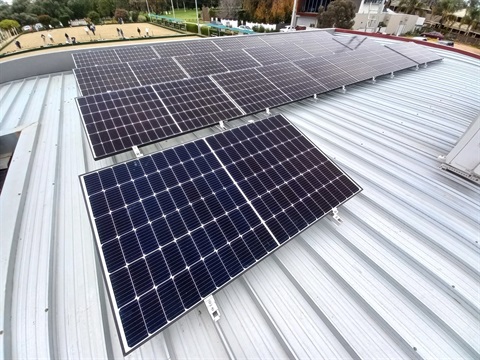Local community groups slash energy bills
Published on 13 September 2022

Six local community facilities have the potential to slash more than $26,000 from their energy bills and 135 tonnes of greenhouse gas emissions each year following a partnership with Mildura Rural City Council and the Victorian Government.
A combination of renewable energy and energy audit projects were recently completed as part of the partnership, which was funded through Sustainability Victoria’s Community Climate Change and Energy Action Program. The six projects included:
Mildura and Workers Bowls Clubs
Solar PV installation
Mildura Football Netball Club
Solar PV installation
DeGaris Kindergarten
Level 2 Energy Audit
Ouyen Pre-School
Level 2 Energy Audit
Underbool Pre-School
Level 2 Energy Audit
Murrayville Pre-School
Level 2 Energy Audit
Councillor Jodi Reynolds said solar PV systems on both the Mildura Football Netball Club’s Mildura Function Centre, and the Mildura and Mildura Workers Bowls Club facilities were now operational.
“These two projects alone will cut almost 100 tonnes in carbon emissions annually and pay for themselves in about three years due to the resulting electricity cost savings,” Cr Reynolds said.
Mildura Football Netball Club President Nathan Seward said electricity cost savings from the solar PV system installed on his club’s function centre would benefit local players.
“We expect to save in the vicinity of $10,000 per year in electricity costs, which we’ll be able to redirect into development of our football and netball players, which is a great result,” Mr Seward said.
“Energy audits at the De Garis Kindergarten, and the Ouyen, Underbool and Murrayville Pre-schools also identified where energy savings could be made which could collectively shave about 36 tonnes in carbon emissions while cutting thousands of dollars from their electricity bills every year,” Cr Reynolds said.
Sustainability Victoria’s Community Climate Change and Energy Action Program supports Victorian community groups by funding upgrades to community facilities. These upgrades aim to reduce energy costs and greenhouse gas emissions through a range of supported measures including energy-efficient and renewable energy technology.
ENDS